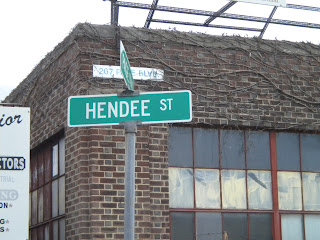1916 Indian PowerPlus motorcycle
The next day I drove to Newburgh, NY to the MotorcyclePedia Museum - a wonderful new facility that has at least one Indian bike on display for all but two of the years they were made, from 1901 - 1953. (a 1901 model is one of the years they're missing, not surprisingly)
I highly recommend going to this museum if you're anywhere near New York City - it's worth the ride or drive. Besides Indian Motorcycles and a great deal of Indian artifacts, they have other great displays, with antique motorcycles of numerous brands and years, including an impressive Harley-Davidson display. They have one section devoted entirely to the 1960s and 1970s style chopper culture, including artifacts from the many outlaw or Easy Rider style of movies that were produced in the late 60s and early 70s.They have also expanded into cars, and have a wall of death (motodrome) in which motorcycles race horizontally on the vertical sides of the enclosure.
I have long been impressed by the skill and pure toughness that was required to ride pre-1920 machines. They were cantankerous, hard to start, required much fiddling and adjusting, had no or very little suspension other than the springs under the bicycle-style seat, no protection whatsoever from weather or wind, and had tires and inner tubes that frequently went flat at the most inopportune times.
What I also find amazing is that for many years they had simple bicycle coaster brakes on the rear hub as the only means of stopping (other than dragging your boots on the ground to slow down). Indian didn't put front brakes on their machines until the 1927 model year! By then motorcycles were capable of impressive speeds, and while the rear brake had evolved to a better external expanding drum style they still provided relatively little in the way of stopping power. Front brakes supply somewhere near 75% of the braking power on a motorcycle (which is why they must be used very judiciously) so riding one with no brake on the front must have frequently resulted in situations in which the pucker factor was over the top!
1927 Indian front brake - first model to have one.
1902 Indian - a somewhat beefed up bicycle with a motor.
A motorcycle adapted for use on railroad tracks!
There are many outstanding museums across the country where a person can marvel at the fascinating two-wheeled world of a century ago. MotorcyclePedia has joined the list of some of the best. The National Museum in Iowa, Barber in Alabama, the H-D Museum in Milwaukee, Wheels Through Time in NC, and many others exist that are protecting this irreplaceable heritage and allowing new generations of enthusiasts a glimpse into what used to be. Time does fly and what seems the norm soon becomes the way it used to be. Having lived through the chopper craze of the 60s and 70s I never dreamed then that I would see those bikes and movie posters in a museum - I assumed in my youthful view of the world that the here and now would remain in place forever.






